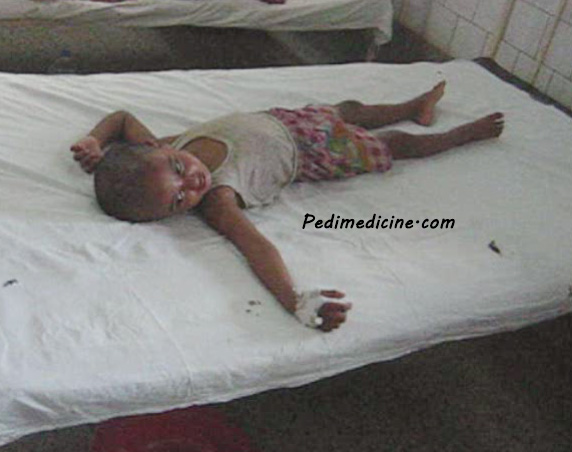
What is Epilepsy in Children
Epilepsy is a series or neurological disorders that result in provoked or unprovoked seizures. The condition is said to be present when a person has two or more unprovoked seizures separated by a time period of at least 24 hours. In the U.S., it is the fourth most common neurological problem, after migraine, stroke, and Alzheimer’s disease. Because epilepsy is a series of disorders, it produces different symptoms which arise because of brain activity. Seizures are the main sign, but not all seizures are provoked by epilepsy.
Some 48 out of 100,000 people develop epilepsy annually, and the rate is higher in children and older adults. In total, there are approximately three million in America with epilepsy. Around 326,000 American children aged less than 15 have the condition, and 200,000 new cases are diagnosed annually. For some children, epilepsy is easily controlled with medication and outgrown as the years pass. For others, it is a lifelong challenge that can have a major impact on many major areas on life. Around 30 per cent of patients do not respond well to medication; sometimes, surgery is recommended in these cases.
What Causes Epilepsy in Children?
Epilepsy often has no identifiable cause, though specific factors may be present, including genetic factors (other family members with the disorder), injury to the head, brain issues such as tumors or strokes, specific diseases including meningitis and AIDS, prenatal brain damage caused by poor nutrition, infection etc., and a handful of developmental disorders, including autism.

What are the Signs of a Seizure?
Seizures can affect any process the brain is responsible for. Sometimes, signs are subtle – temporary confusion, or staring; other times, they manifest themselves more forcefully, via uncontrollable jerking of arms and legs, fainting, psychic symptoms, etc.
What are the Different Types of Seizure?
Seizures are generally divided into two categories: focal seizures (when just one part of the brain seems to be causing the seizure) and generalized seizures (where all areas of the brain are involved).
- Focal (partial) seizures include: simple partial seizures, in which a body part may jerk, or there may be changes to our sense of smell, sight, taste etc., but the person does not lose consciousness. In complex partial seizures, there may be a loss of consciousness, or a change in awareness (a person might stare or engage in repetitive moment such as chewing, walking in circles, etc.).
- Generalized seizures include tonic seizures (in which the muscles stiffen and may cause the child to fall); atonic seizures (these affect the child’s muscle control, causing them to fall); absence seizures (also called petit mal seizures, these involve staring into space, lip smacking, blinking… sometimes the child may lose awareness of where they are when the seizure takes place); clonic seizures (jerking muscle movements occur, usually in the neck, face or arms); myoclonic seizures (sudden, quick twitches in extremities); and tonic-clonic seizures (sometimes referred to as grand mal seizures, they are the most intense type of seizure, often involving loss of consciousness, severe shaking and stiffening, biting of the tongue, etc.).
Some children can display behaviors which can be confused with seizures but which are not actually indicative of them, including shuddering, rocking, and conversion disorder (which occurs when a psychological problem manifests itself physically).
Common Seizure Syndromes in Children
There are over 20 electro-clinical syndromes recognized by The International League Against epilepsy, each of which has its own combination of clinical features, symptoms, electrographic patterns, etc. Many of these syndromes occur in childhood. If an infant has seizures that do not respond well to treatment, they may have Dravet Syndrome (also known as Severe Myoclonic Epilepsy of Infancy (SMEI)), which is rare and debilitating, severely impeding the life of a patient from infancy onwards. Another rare syndrome is Ohtahara syndrome, which commences in the first two weeks of life. Around half of all infants with Ohtahara pass away within the first year, and those who survive can have cerebral palsy. Primary reading epilepsy is a rare reflex epilepsy that occurs almost exclusively when a patient is reading.
Epilepsy: Obtaining a Diagnosis
If your child has had a seizure, it is vital to obtain a comprehensive medical examination and to undergo diagnostic testing. The latter may include blood tests, an EEG, MRI, CAT scan or lumbar puncture.
Treatments for Epilepsy
Your child’s doctor will determine the best treatment plan for your child following diagnosis. Medication will depend on your child’s age, the type of seizure he or she has, their tolerance for specific medications, etc. The aim is to stop, control or decrease the number of seizures, without interfering with the child’s natural growth and development. There are over 20 medications approved for the treatment of seizures, and more are currently undergoing clinical trials. When your child starts taking his or her medication, your doctor will carry out further tests to check for the effectiveness of the treatment. Tests may involve blood work or an EEG. Some children who do not respond well to medications or whose seizures are difficult or impossible to control, benefit from adopting a ketogenic diet, which is very high in fat and low in carbohydrates.
This is a guest article submitted by Helen Gaye. Thanks.
I want to know brain eeg test fee in BSMMU.
You have to contact the Neurology dept. But the EEG report of Comfort Diagnostics is better accepted in case of children.